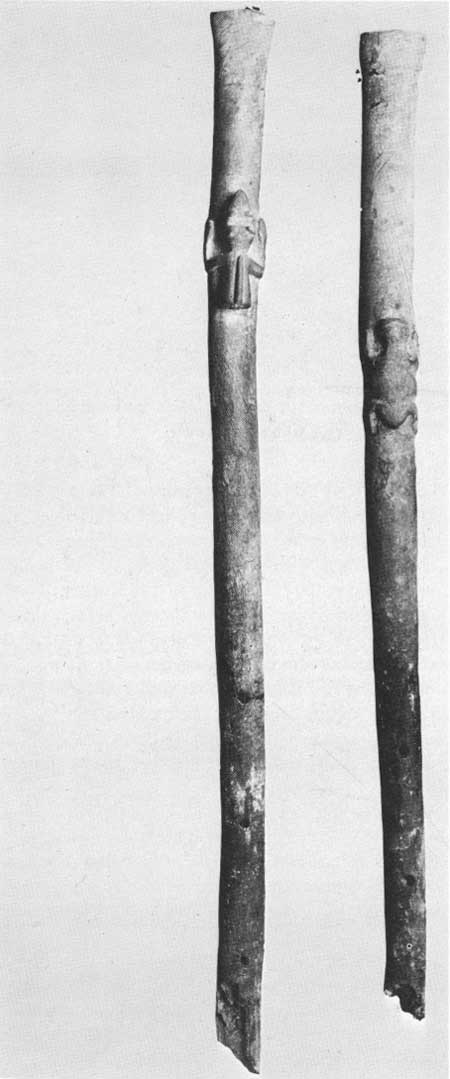 |
Duet playing between Native American flute players is a fairly simple task. The players usually select the key in which they choose to perform, and take turns in listening and playing. As long as the flutes are tuned to the same pitch, the compatibility of the instruments will be pleasing. Pairing an Anasazi-style flute with a Native American flute (NAF) presents a different problem due to the way keys are designated for each kind of flute. The root note designation for Anasazi-style flutes denotes the beginning of a major pentatonic scale. Common keys for Anasazi flutes are A, G# (or Ab), and some higher pitched versions in C and D.
Unlike almost any other Western key-tuned flute, the NAF is named by a minor key rather than the major, because of the pentatonic minor scale structure of the NAF. Flute players fill in their collections by acquiring instruments in various root notes (F#, G, A, etc.), and that root note designation refers to the minor key of that note. For example, the NAF in A is really A minor, no sharps or flats. The major key with no sharps or flats is C, and with the right fingering the NAF in A minor can also play the major C scale (also called mode 2 for the NAF).
The Anasazi scale is based on a pentatonic major scale based on the lowest note of the flute. This distinction is important because a NAF flute in A (minor), no sharps or flats, is not compatible with an Anasazi flute in A (major), 3 sharps. And while it's worth noting that the Anasazi flute can play in a minor mode, a greater number of compatible notes between the two kinds of flutes are available if you use flutes with the same number of sharps or flats in their scale structure.
In music theory, each set of sharps and/or flats in a major key have its minor key complement (called a relative minor). The musical distance is a minor 3rd apart. If you pair a NAF with an Anasazi flute, use this as a guide:
Anasazi A with NAF F#m (3 sharps)
Anasazi G# (Ab) NAF Fm (4 flats)
Anasazi C with NAF Am (no sharps or flats)
Anasazi D with NAF Bm (2 sharps)
Take a listen to Welcome Dance and Two Hearts in the September 18 post at http://www.anasazidream.com. The overdubbed recording is played with an F#m NAF with an A Anasazi Dream flute. Because both instruments share the same key signature, the pieces hold together musically.
Article Directory: EzineArticles |

No comments:
Post a Comment